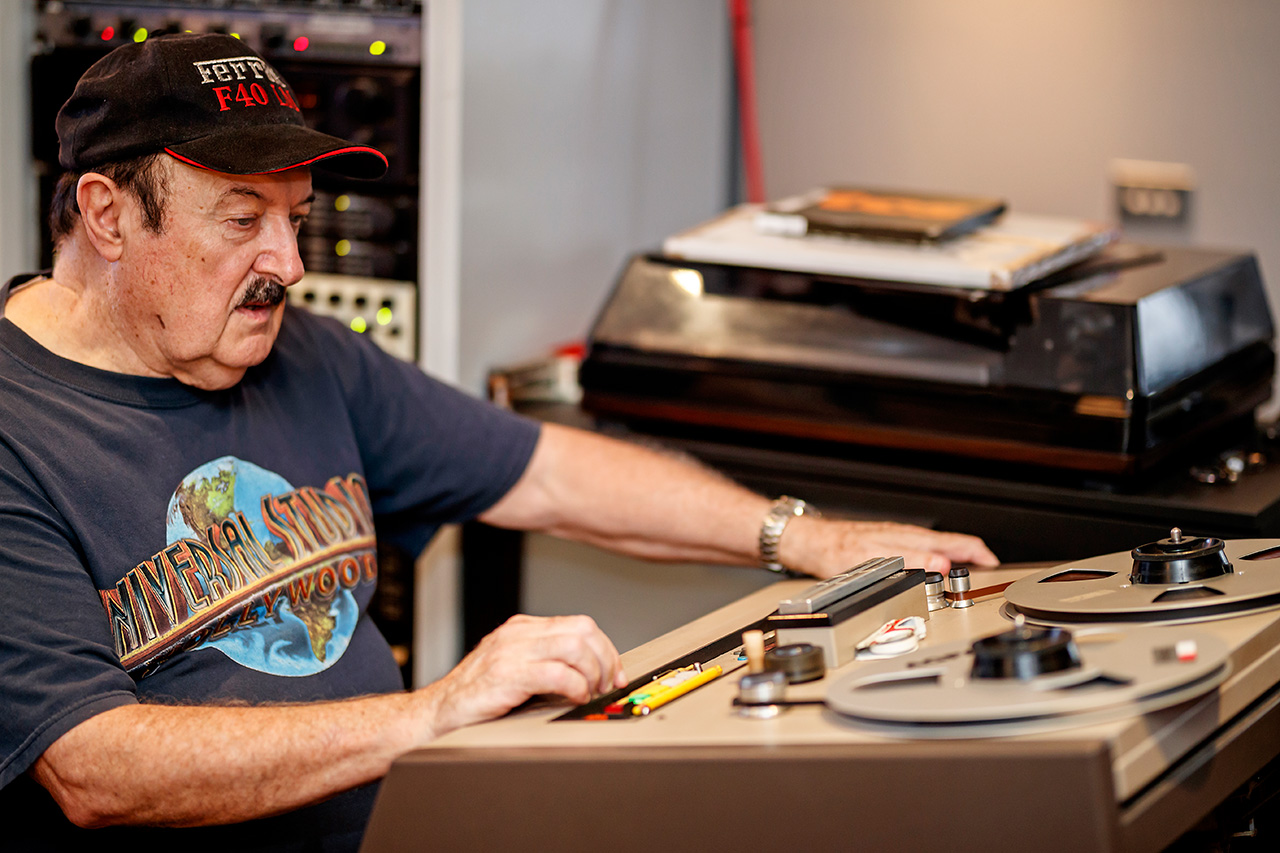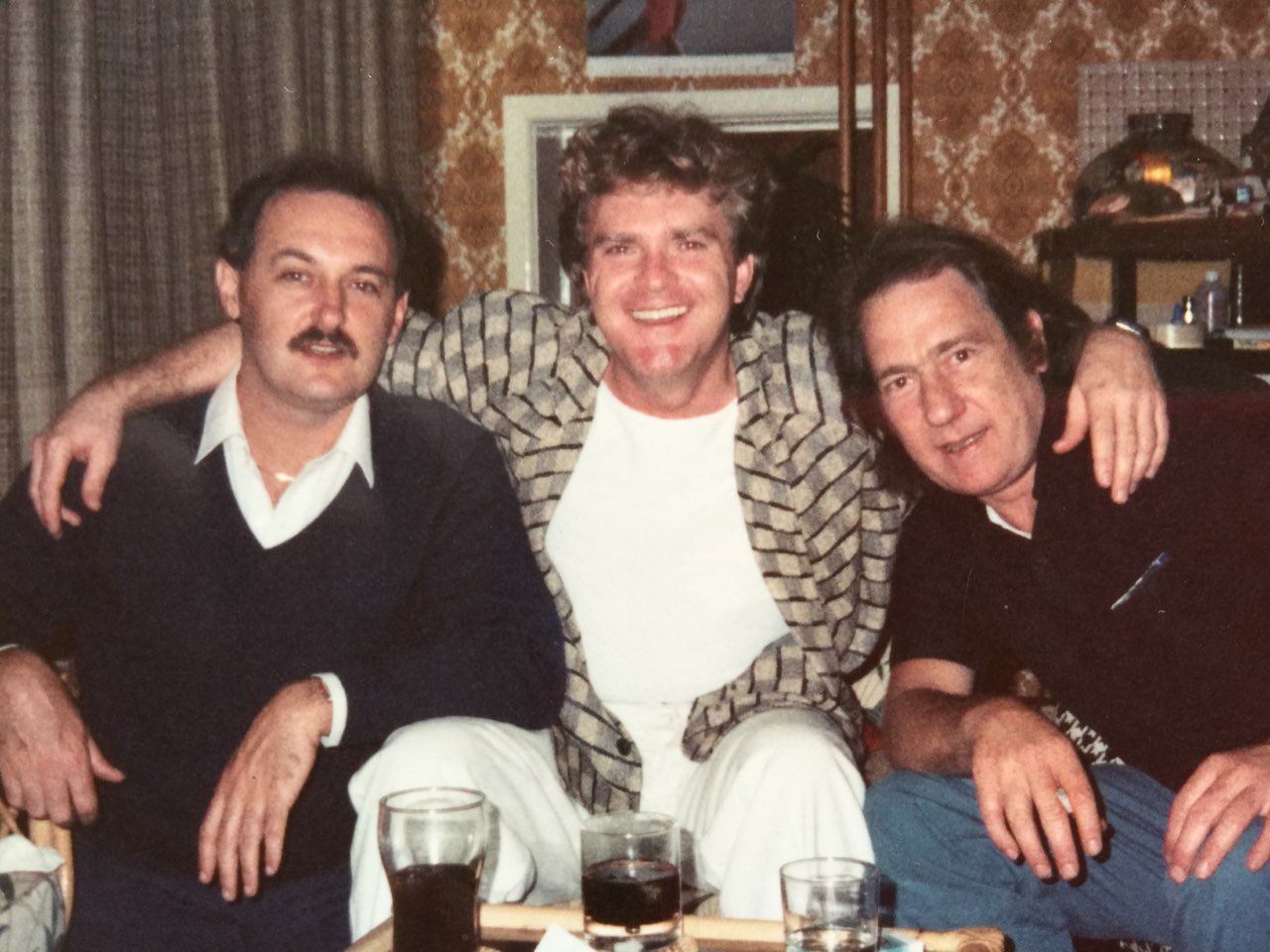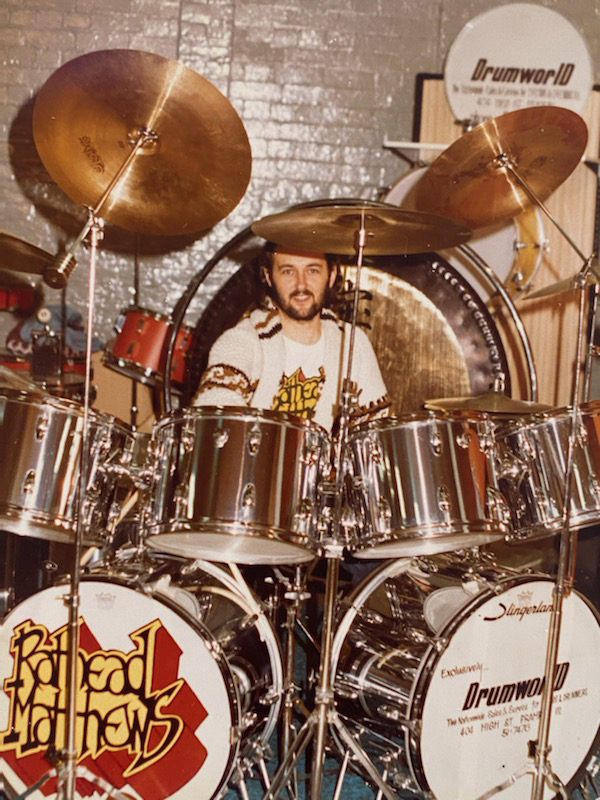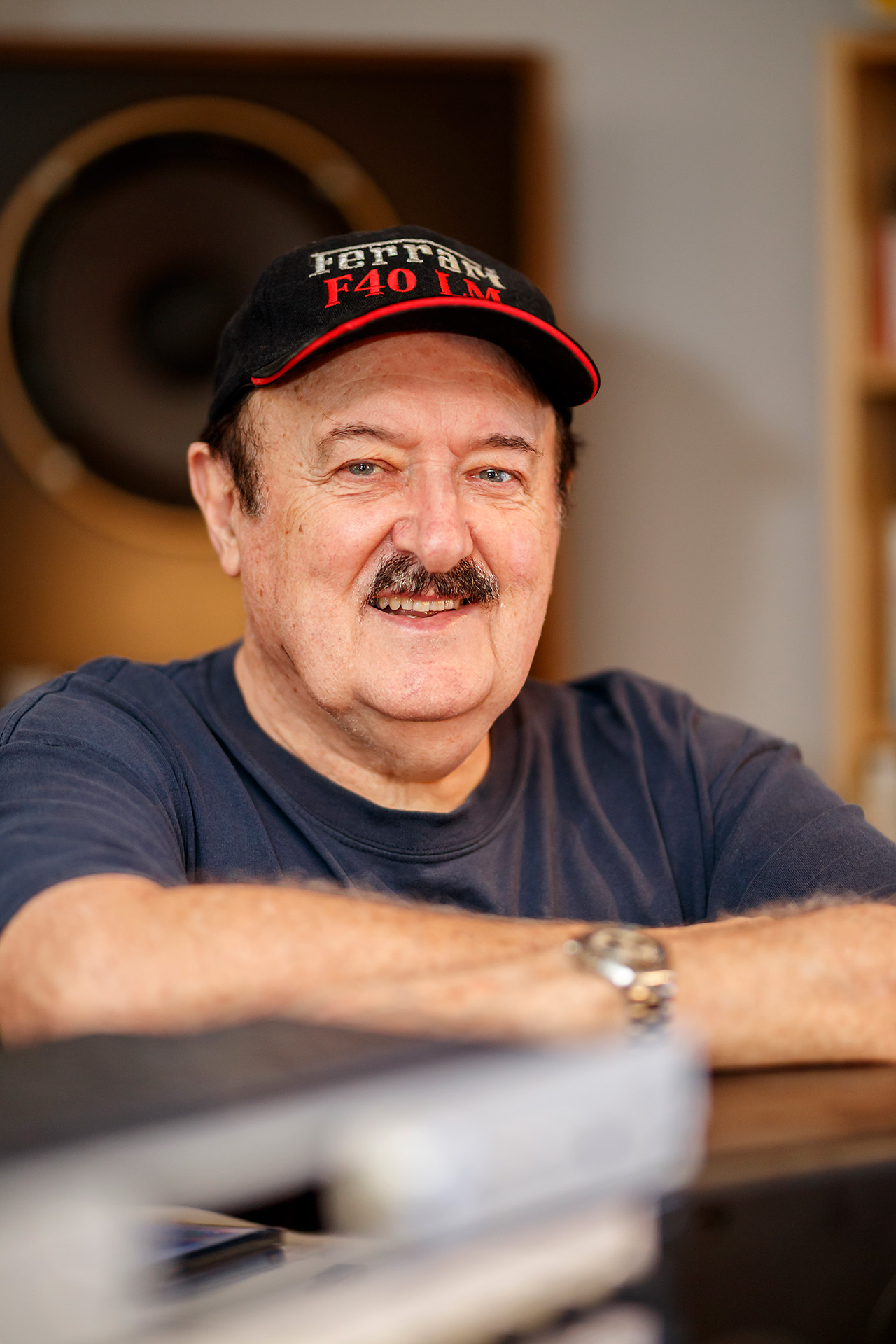
By Muriel Cooper Photos Yanni & Supplied
Gil Matthews has drummed his way through multiple bands including Billy Thorpe and the Aztecs and Mondo Rock. He’s also a recording engineer and record producer and has a unique piece of recording equipment in his Mt Martha studio, a Neumann record cutting lathe. He uses it to cut master recordings for vinyl records on his Aztec record label.
Gil attributes the resurgence of interest in vinyl recordings to parents and grandparents dying and leaving record collections and record players. “Plus,” Gil says, “there’s something glamorous about buying a twelve-inch record that has a great photograph, with liner notes you can actually read.”
He says it’s also because technology has nowhere else to go.
“Cassettes came along, then CDs, then downloading and then streaming, but I can’t see what else there is unless someone invents something other than digital technology – and I don’t think they have, or even know how to.”
He says vinyl is the longest-running source of recording material that still can be used that hasn’t deteriorated. A lot of the early CDs suffer from heat and condensation in the air. They’re falling apart, and you can’t play them.
But what is it about the sound of vinyl? Gil says, “Vinyl is analogue, and CD is digital, and they’re two main sources of how music gets to your ears.”
“At the end of the day, humans hear analogue; we don’t hear digital. When a bird chirps down the road, it’s analogue. So the whole process of CDs and digital technology is a bit alien to us, being analogue human beings.”
“At the end of the day, humans hear analogue; we don’t hear digital.
Gil’s Neumann cutting lathe is one of only two in Australia. Record-cutting lathes were an extraordinarily expensive piece of equipment, and most of them ended up in the tip because everyone thought vinyl was dead. One was sent to New Zealand and ended up in a river. The lathe cuts the master disc, which is the first step.
He explains the process, “I cut the master, and the master is taken to another factory where it’s put in an electrolysis bath similar to putting chrome on a bumper bar. They make a metal record out of that, then put that metal record into a machine. Then they take a big lump of vinyl like a cow pat and put on lots of pressure, heat and cold water, and out pops a record.”
Recently Gil did a vinyl album for the group Stars, featuring bass player Roger McLaughlin from the Little River Band.
“They wanted to put out a vinyl record, and all they had was a digital file, so I had to try and make it sound as smooth as possible… beautiful smooth top end, no crunch, and I’m quite proud of the result. It’s my hobby, so I can spend time on it. If you’re good enough as a mastering engineer, you can make a digital recording sound like vinyl.”

Gil with Billy Thorpe and Lobby Loyde
Gil also releases CDs, with one by the late Renee Geyer coming out soon. Much as he loves vinyl, Gil says, “Putting vinyl through the post is problematic. CDs are much easier, plus you have eighty minutes of recording on a CD as well as bonus tracks versus forty-five minutes for vinyl.”
Reminiscing about his days with Billy Thorpe and the Aztecs, Gil says, “I joined that band and partied for twenty or thirty years.”
“Billy used to have an incredibly large amplifier set up, and I remember being at the Dandenong Town Hall, and one of the speakers caught fire. His leather jacket was on the speaker box – it caught fire as well. That’s a classic.”
“The most memorable situation was when the Kirov Ballet decided they wanted to go to a Western recording studio when the band was doing overdubs, so in came two KGB guys, the head ballerina and five other ballerinas. At the end of the night, the two KGB guys were drunk and stoned on the floor in the recording booth, and we were pirouetting across the stage with the head of the Kirov Ballet. I wish I’d had a film crew! It was incredible.”
Gil only ever wanted to be a drummer.
“My mother wanted me to be an undertaker because they apparently make a lot of money. I said,’I faint at the sight of blood. How’s that going to work?’ I don’t know anything else. Music’s been my whole life since I was five years old. I grew up playing jazz as a kid, so a lot of that influenced how I played. Then I joined the Aztecs, and my whole style changed. It was more like bashing the hell out of the kits to be heard over all the amplifiers.”
Gil has lived on the peninsula since 1971.
“One of my friends ran Woodwards Butchers in Frankston, and I thought ‘This is a lovely part of the world to live.’ It’s all about the vibe. Especially in the summer; it’s got that atmosphere that you’re in a holiday-type zone. A lot of my friends live down here. It’s got a nice, relaxed feel about it.”
Gil is still playing with the Marty Rose band and Normie Rowe and loves it because, as he says, “I’m playing a lot more tastefully than I used to. I’m playing a lot more dynamics, not hitting as hard, and playing a lot of music that I really love. I love that seventies music. To me, that’s the best music that ever was.”


